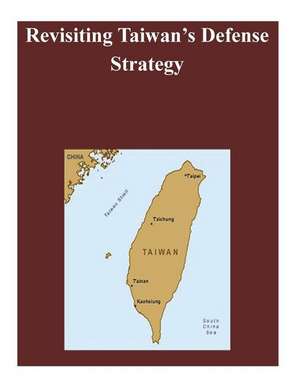Revisiting Taiwan's Defense Strategy
Autor Naval War Collegeen Limba Engleză Paperback
Preț: 80.92 lei
Nou
Puncte Express: 121
Preț estimativ în valută:
15.48€ • 16.13$ • 12.82£
15.48€ • 16.13$ • 12.82£
Carte disponibilă
Livrare economică 13-27 martie
Preluare comenzi: 021 569.72.76
Specificații
ISBN-13: 9781502929587
ISBN-10: 1502929589
Pagini: 28
Dimensiuni: 216 x 279 x 2 mm
Greutate: 0.09 kg
Editura: CREATESPACE
ISBN-10: 1502929589
Pagini: 28
Dimensiuni: 216 x 279 x 2 mm
Greutate: 0.09 kg
Editura: CREATESPACE
